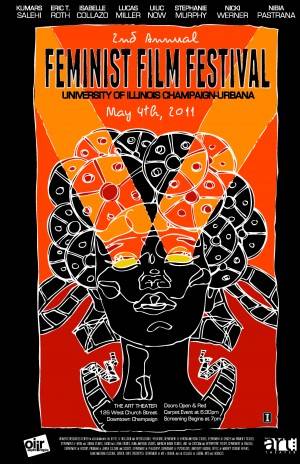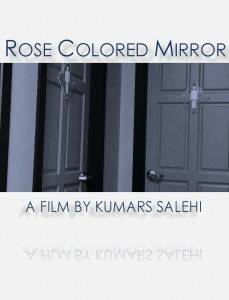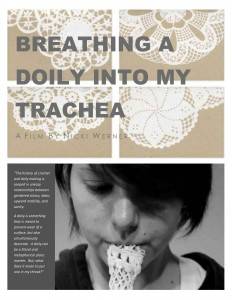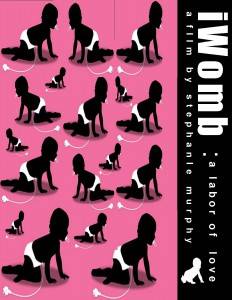 Rachel Storm is the Program Coordinator for the Women’s Resources Center at the University of Illinois, and this Wednesday, she’ll host the Second Annual Feminist Film Festival.
Rachel Storm is the Program Coordinator for the Women’s Resources Center at the University of Illinois, and this Wednesday, she’ll host the Second Annual Feminist Film Festival.
I met with Rachel recently and we talked about the festival’s history, its purpose, and what we can expect from this year’s filmmakers.
Smile Politely: This is your second festival, correct?
Rachel Storm: Yes. This is our second annual Feminist Film Festival.
SP: How many entries did you receive last year?
Storm: We had five entries. It was much smaller last year. We held the festival in the Activities and Recreational Center, and though it seemed like a great option for us at the time, I really wanted to have the festival at the Art Theater, but we weren’t sure whether students would travel to get there since it’s not on campus.
But I did talk to the filmmakers after, and this year’s filmmakers as well, and there was a lot of enthusiasm about the prospect of having the festival at the Art Theater and seeing the films on a big screen, so we went with them this year.
SP: And you have nine entries this year?
Storm: Yes, we have nine films we’re showing this year. And most of the filmmakers will be present and will give a short introduction to each of their films. We’re also featuring a talk-back after the show where all filmmakers present will be able to answer questions and discuss their films.
SP: And the films are fifteen minutes in length, correct?
Storm: They’re anywhere between five and fifteen minutes, give or take.
SP: And the festival is entirely student created, right? Written, acted, directed?
Storm: Yes. There are two films that are coming to us from recent alumni who still have members of their original crew on campus, and wanted to submit this year, but overall, this is a student festival.
Students have also been the driving force on determining how the festival will go, how they want the prescreening reception to go, what questions they hope will arise, and how they’d like to structure the judging. We’ve also had lots of help along the way from staff, faculty, and co-sponsoring departments.
SP: And this is produced through the Women’s Resources Center in the Office of Inclusion and Intercultural Relations?
 Storm: Yes, and we have a laundry list of co-sponsors. One of the things I wanted to do by having more co-sponsors is to encourage different types of films to be submitted. We strategically tried to invite co-sponsorships from a variety of departments ― particularly in area studies and ethnic studies ― in order to encourage those departments to promote the festival to their students as class assignments in hopes that we would also receive lots of submissions from students who, because feminism has, by and large, concerned itself with white women’s history and the concerns of white women, might not necessarily identify as a feminist or see their work as fitting into a feminist film festival. So we hoped to collaborate with some of these units and departments on campus to really show that the Feminist Film Festival is meant to be a critical hub for those important discussions, as well as, to serve as a space for addressing the question of ‘what is feminism and how do we uniquely define it?’
Storm: Yes, and we have a laundry list of co-sponsors. One of the things I wanted to do by having more co-sponsors is to encourage different types of films to be submitted. We strategically tried to invite co-sponsorships from a variety of departments ― particularly in area studies and ethnic studies ― in order to encourage those departments to promote the festival to their students as class assignments in hopes that we would also receive lots of submissions from students who, because feminism has, by and large, concerned itself with white women’s history and the concerns of white women, might not necessarily identify as a feminist or see their work as fitting into a feminist film festival. So we hoped to collaborate with some of these units and departments on campus to really show that the Feminist Film Festival is meant to be a critical hub for those important discussions, as well as, to serve as a space for addressing the question of ‘what is feminism and how do we uniquely define it?’
SP: Can you give us an idea of what ― to you ― constitutes a ‘feminist film’?
Storm: For the purposes of our festival, a ‘feminist film’ qualifies itself by meeting two of the following criteria:
- Films created with a focus on gender and/or social justice issues
- Films that bring focus to local and/or global issues
- Films created by people underrepresented in the media field (women, people of color, queer/transgender, persons with disabilities, etc.)
I personally have a pretty broad definition of feminism. And I will use the word ‘feminism’ strategically just as much as I use any other word to talk about issues of power, privilege, oppression, and justice. For me the criteria that we’ve put forth with respect to focusing on a local or global issue, exploring issues of power, exploring issues of identity ― those are all very feminist questions for me. We’ve seen in the past, feminism being used for a variety of things, good and bad. We also want to answer the critique that feminism has, by and large, only served the interests of white women. I think that that’s actually very true. And we want to instead create a space for an intervention where we can explore feminism that speaks to the issues of power, privilege, and oppression in our understandings of intergroup relations, social phenomena, and social justice. And so that’s our goal for this festival.
SP: What specific genres will we be treated to this year?
 Storm: We admitted films that were narrative, experimental, and documentary, and this year I’m really excited to say that we have multiple experimental films, and that for me, personally, is really rewarding. I’m a lover of performance and visual arts, and my hope is that having some more experimental genres in the festival is as exciting for me as it is for our audience.
Storm: We admitted films that were narrative, experimental, and documentary, and this year I’m really excited to say that we have multiple experimental films, and that for me, personally, is really rewarding. I’m a lover of performance and visual arts, and my hope is that having some more experimental genres in the festival is as exciting for me as it is for our audience.
There are lots of students who are exploring some really interesting themes through their methodologies, use of theory and philosophy behind the making of their films. Satirical and surreal films. Identity politics. All of these films speak to lots of different facets of how people experience gender. They explore feminism from a standpoint that doesn’t simply center the experiences of cisgendered/cissexual women, but instead they look at gender as a fluid construct and explore how gender affects us all. This is going to be brought out at the festival and will hopefully ignite some interesting and important conversations.
SP: Now this isn’t simply a film screening, right? There are also prizes involved.
Storm: Yes, we have a judges panel this year. Last year the audience judged everything, and we weren’t able to even announce the winners at the festival, and that lessened the excitement. We had to announcement the winners two weeks later. But this year we have a panel that is judging five of the six awards. The only award that they’re not judging is our “Audience Impact,” which will come directly from the audience. So that award is going to be tallied during the talk-balk for films.
SP: What other changes can we expect this year?
Storm: There is just a whole lot more pomp and circumstance this year. In our first year the festival was small. We viewed the films and then talked in a casual environment where students and filmmakers could speak about their film, followed by a Q&A. So it was a much smaller gig, whereas this year it really is going to be much larger. We can seat 250 people this year.
We’re having a prescreening filmmakers reception for the filmmakers and their guests and that is really where the filmmakers are going to get to share information between one another about how they conceptualized their films and what qualifies as a feminist film in their minds and what makes their film feminist, which is really interesting because we wanted to give students that opportunity to dialogue about their experiences in making a ‘feminist film.’
We also have a lot of really fun things that we’re doing this year. We’re having a red carpet walk beginning at 6:30 p.m. and inviting folks to get their pictures taken on the red carpet ― we’ll have two photographers present. We’re opening the doors early, and prior to the screening, we’re playing local music throughout the theater as people are seating.
Last year we gave out certificates, but this year ― through the grace and generosity of The I.D.E.A. Store ― we were able to create festival trophies from old soccer trophies that were donated to us.
SP: Who is judging the festival?
Storm: Our judges panel includes Dr. Fiona Ngô, Dr. Angie Valdivia, myself, Ashley Senesac, and Dr. Mimi Nguyen. Our faculty members come from gender and women’s studies, ethnic studies, or media and cinema studies, but in particular we look for people whose scholarship places them at the intersection of a lot of those different fields, so they might be Ethnic Studies or Gender and Women’s Studies professors who incorporate media and cinema studies into their work. So we tried to look for people who have examined issues like gender, sexuality, race, or class within cinema so that they can draw on that discipline for our festival.
SP: Are the students themselves drama students? Are they studying theater?
Storm: There are students from a variety of different majors and areas of study. We have film groups that are made up of a director and videographer; we have other film groups with several people in them, and they’ll have more actors in their films. And then we have people who made their films completely on their own. We really do have a wide range this year, which is really exciting. We have some students that are coming from media and cinema studies, but by and large I don’t think there is any coherency about what major they’re studying.
SP: The festival is put on by students, but is it just for U of I students?
Storm: Participation in the festival is intended for students who are at the University of Illinois. In terms of dreaming for the future we have also thought about possibly collaborating with Parkland and seeing if they’d be interested in collaborating next year to do a wider film festival between Parkland students and U of I students. That’s an idea that’s been tossed around.
SP: Are the films rated?
Storm: That question recently came into my mind because a couple of our films are a little more graphic than last year, which has been explained in all of our electronic advertising. I didn’t rate them this year, but it’s something that I definitely plan to consider next year. But that’s a question that will bear a lot of thought and discussion before we settle on how we would categorize films in that way.
SP: Graphic in what way?
 Storm: There is a film in which students flip gender roles. They’re using the swapping of gender roles to draw attention to the way women who work in the home are oppressed or unappreciated. In this film, you could say that certainly the man is being verbally abused, unappreciated, and ignored. There are indicators of different forms of domestic violence, but there is no extreme violence in any of the films. There’s discussion of sexual assault in another film and we have another film that’s experimental that does have brief nudity in it, but it’s shot in a way that makes it hard to assess whether it would really qualify as nudity.
Storm: There is a film in which students flip gender roles. They’re using the swapping of gender roles to draw attention to the way women who work in the home are oppressed or unappreciated. In this film, you could say that certainly the man is being verbally abused, unappreciated, and ignored. There are indicators of different forms of domestic violence, but there is no extreme violence in any of the films. There’s discussion of sexual assault in another film and we have another film that’s experimental that does have brief nudity in it, but it’s shot in a way that makes it hard to assess whether it would really qualify as nudity.
Others that come to mind are those that are graphic because they’re experimental films. We have a film, for example, that we’re showcasing this year that was part of a visual arts project from an MFA student here at the University of Illinois. Her name is Nicki Werner and her film is called Breathing a Doily into My Trachea. This film could be troubling for someone to watch, but it’s hard to determine ― especially with experimental films ― what qualifies as ‘one particular rating.’ There’s no nudity in this film; there’s no language in this film, but it could be visually or aurally disturbing.
SP [laughing]: I’m looking forward to seeing that film! I’m excited that I’m going to get to see it because I missed its showing at Indi Go.
Storm: Well, tickets are free and open to the public, and they’re currently available. Anyone in the community can come and get them at any of our culture centers. Tickets will be available at the door too, but to get seating early, you have to get them through the Women’s Resources Center or other cultural centers (Native American House, LGBT Resource Center, La Casa Cultural Latina, Asian American Cultural Center, and the Bruce D. Nesbitt African American Cultural Center) on campus. [Editor’s note: Information on all of these centers can be found here.]
SP: But seating is very limited. Two hundred and fifty seats is not a lot of space.
Storm: It’s a small theater. For now, I think it’s still very sizable. We might consider having the festival multiple days in the future before we consider a different venue. I really love the Art Theater. Sanford Hess, the owner, has been very supportive, and I’m excited to see how it will go this year. Tell your friends! (laughs)
~~*~~
The Art Theater
Wednesday, May 4, 7:00 – 10:00 p.m.
 FEATURED FILMS INCLUDE:
FEATURED FILMS INCLUDE:
The Funniest Thing, by Lucas Miller
Spick, by Nibia Pastrana Santiago
Pants Girl and Dress Boy Fight Hegemony, by Eric T. Roth
Mid-Afternoon Luncheon, by Isabelle Collazo
INTERMISSION
This Is How We Do It, by UIUC National Organization for Women
iWomb: A Labor of Love, by Stephanie Murphy
Breathing a Doily into my Trachea, by Nicki Werner
Defining Consent, by Cat Calcagno
Rose Colored Mirror, by Kumars Salehi
Questions? Please contact Rachel Storm (217-333-3137).
Festival poster
Poster for Breathing a Doily into My Trachea
Poster for Rose Colored Mirror
Poster for The Funniest Thing








